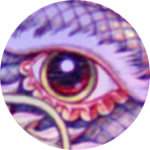Thanks for the article. It's great that it covers a lot of different issues concerning the subject of Jing (Ging in Cantonese) - power issue. While I appreciate the article and Master Yee's openess in sharing his views, I can't say that I agreed with the view point in the article concerning Jing. Of course, he knowledge and experience in Hung Gar is much appreciated.
One of the points that seems problematic for me is the following quote:
I believe the book that it mentioned here is the Vajra Prajna Paramita sutra. Vajra (thunderbolt) is often translated as diamond, which is why it is translated as hard and sharp in the article. But Vajra can also be translated as "That Which Distroys" referring to the awesome power that is inherit in the thunderbolt. Here Vajra is a metaphor of Prajna (wisdom of void) having the same attributes as Vajra that cuts away all illusions. Paramita is "Bo Law Mat Dor" not Bo Law Mat. It means a raft or ride/Yana (methodology) that brings a person across a river (transcends the mundane life into the spiritual realm), which is the essence of Ch'an. Sutra is lessons, mostly spiritual in nature, that are written on papers that are threaded together as book. Given this is the last item and deemed as the highest of the training in Master Yee's view in the article, I would expect that it expounds on what Quan Ch'an He Yi (Fist and Zen being one) is about. I find the article's final position is largely weaken because of not addressing Quan Ch'an He Yi. Sorry to neat pick again ...Gum Gong Ging
This ging comes from the Sil Lum book Sil Lum Boon Yeurk Bo Law Mat Ging, meaning the hard and sharp which destroys everything. To attain gum gong ging, you need to know all the previous ging's, combined with hard and soft ging, as well as extensive training. The gum gong ging is the highest level of Hung Ga.
Just some thoughts
Warm regards
Mantis108




 Reply With Quote
Reply With Quote





 okay.... Thanks Gene.
okay.... Thanks Gene.